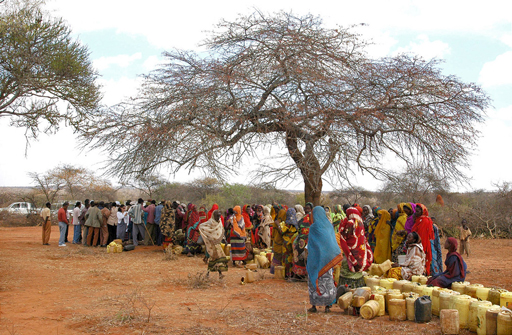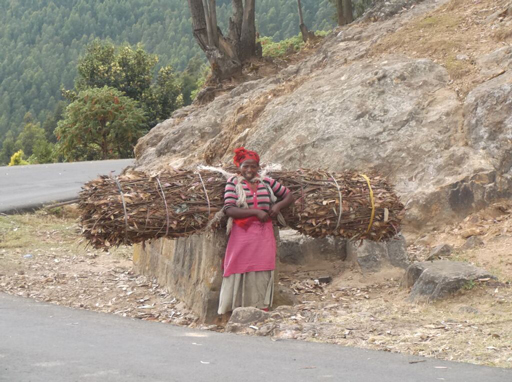10.3.2 The causes of drought in Ethiopia
Global warming and alterations in rainfall patterns are believed to be the underlying cause of the trend towards more frequent and more severe droughts in Ethiopia (MoWR/NMA, 2007).
Can you suggest why a climate which is gradually becoming warmer will result in an increase in the risk of droughts? (Hint: think back to Study Session 9.)
Increased air temperature will heat the surface of water bodies and make the soil warmer, resulting in increased evaporation of water into the atmosphere. Also, as plants die through lack of water (remember Figure 10.5), large areas of bare soil are exposed to the heating effects of higher air temperatures, so even more water is lost through evaporation.
There are many other interlinked factors that cause droughts in Ethiopia. Between 1950 and 2014, the population grew from 18.1 million to 96.5 million people, so there has been a rapidly increasing demand for water to meet their needs (Figure 10.7). The rising standard of living, economic growth and industrial development all increase water demand because they require more water for additional uses. Particularly in urban areas, the demand for piped water and flush toilets has increased because households aspire to achieve higher standards of hygiene and sanitation.

Population pressure also leads to high deforestation for agricultural expansion and to meet the growing demand for wood (Figure 10.8) to burn as fuel and also for building fences and houses.

Summarise the ways in which forests sustain the water cycle and locally available water resources.
Forests play a crucial role in stabilising soils, reducing water run-off during rainy periods and increasing the amount of water stored underground. Shade from trees also reduces surface water evaporation and trees add moisture to the atmosphere through the process of transpiration. Thus, forests can be considered an important part of the water cycle and they contribute to sustaining the availability of water in the local area.
In summary, climate change leading to global warming and reduced rainfall, coupled with population pressure, deforestation and change in land use are all major factors in the increasing risk of drought in Ethiopia.
10.3.1 How many Ethiopians are affected by drought?
